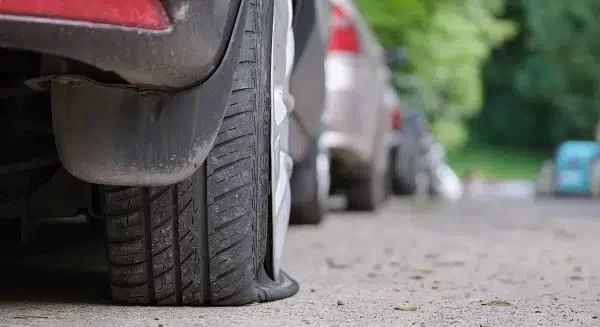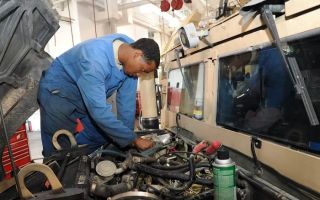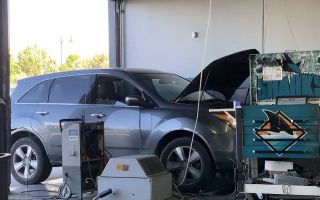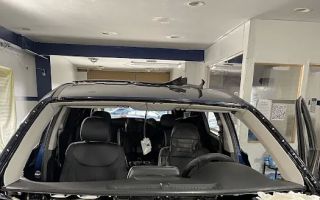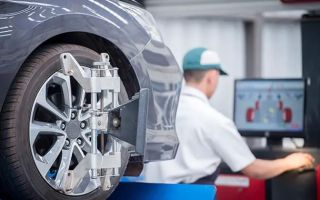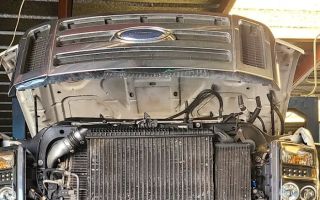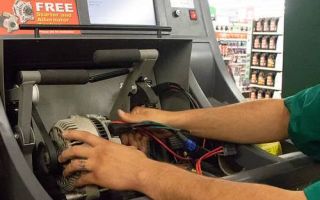How to Fix a Car with a Slow Puncture in the Tire – A Step-by-Step Guide
Dealing with a slow puncture is frustrating. I remember the first time I noticed my tire pressure warning light kept coming on, even after topping up the air. At first, I thought it was just normal pressure loss, but after checking my tires more closely, I realized one of them was slowly deflating over time. Ignoring a slow puncture can lead to a flat tire at the worst possible moment, so I always make sure to fix it before it gets worse. Here’s how I troubleshoot and repair a slow tire leak step by step.

MR. TIRE INC.
2078 New York Ave, Huntington Station, NY 11746, USA
1. Identifying the Signs of a Slow Puncture
Before fixing the problem, I make sure the issue is actually a slow puncture. Here are the key signs:
- Tire pressure drops gradually: If I need to inflate the same tire every few days, there’s likely a leak.
- Handling feels off: A tire with low pressure can make steering feel unstable.
- Visible damage: I check the tire for small objects like nails, screws, or glass shards.
- Hissing sound: If I hear air escaping when inspecting the tire, it confirms a leak.
2. Locating the Slow Puncture
Once I suspect a slow puncture, I follow these steps to pinpoint the exact location:
- Visual Inspection: I closely examine the tire’s tread and sidewalls for embedded nails, cracks, or cuts.
- Soapy Water Test: I mix dish soap with water and apply it over the tire using a spray bottle or sponge. If bubbles form, that’s where the air is leaking.
- Valve Stem Check: Sometimes, the leak isn’t from a puncture but a faulty valve. I apply soapy water around the valve stem to see if bubbles form.
- Bead Leak Inspection: If I can’t find a puncture, I check the edge of the tire where it meets the rim. A bead leak can cause slow air loss, especially in older or corroded wheels.
3. Choosing the Right Repair Method
Once I locate the leak, I decide the best way to fix it. The repair method depends on the type of puncture.
- For small punctures (like nails or screws): A tire plug or patch kit works well.
- For bead leaks: Cleaning and resealing the bead area may be necessary.
- For valve stem leaks: Replacing the valve core can stop air loss.
- For sidewall damage: Unfortunately, sidewall punctures aren’t repairable, and I’ll need a new tire.
4. Repairing the Slow Puncture
If the leak is repairable, I follow these steps to fix it properly.

MR. TIRE INC.
2078 New York Ave, Huntington Station, NY 11746, USA
Using a Tire Plug Kit
- I remove the object causing the leak using pliers.
- I use a reaming tool from the kit to clean and widen the hole slightly.
- I insert the rubber plug into the provided installation tool and push it into the hole.
- Once the plug is in place, I trim off the excess material.
- I inflate the tire and check for leaks again with soapy water.
Patching the Tire from the Inside
- I remove the tire from the wheel using a tire removal tool.
- I locate the puncture from the inside and roughen the surface around it.
- I apply a special tire patch and sealant to cover the hole.
- After waiting for the adhesive to cure, I reinstall the tire and check for leaks.
Fixing a Bead Leak
- I deflate the tire and remove it from the wheel.
- I clean the bead area using a wire brush to remove corrosion or dirt.
- I apply bead sealant around the tire’s edge before reinflating it.
- I check for any remaining leaks before putting the wheel back on the car.
5. Testing the Repair
After repairing the tire, I always double-check my work.
- I inflate the tire to the recommended pressure.
- I perform the soapy water test again to ensure there are no remaining leaks.
- I drive for a short distance and check if the tire holds air over the next few days.
6. When to Seek Professional Help
Sometimes, a slow puncture can be tricky to fix, especially if it’s caused by a rim issue or a large puncture. If I can’t properly seal the leak or the tire continues losing air, I take it to a professional repair shop. If the tire deflates completely while driving, I avoid driving on a flat tire and call a tow service instead. For a reliable towing option, visit Rescue & Towing.
7. Preventing Future Slow Punctures
To avoid dealing with slow punctures in the future, I follow these simple maintenance tips:
- Check tire pressure regularly and maintain proper inflation.
- Inspect tires for damage after driving on rough roads.
- Avoid driving over debris or potholes that could cause punctures.
- Rotate and balance tires to ensure even wear.
- Replace worn-out valve stems when changing tires.
By keeping up with tire maintenance and addressing slow leaks early, I can ensure a safe and smooth driving experience.

